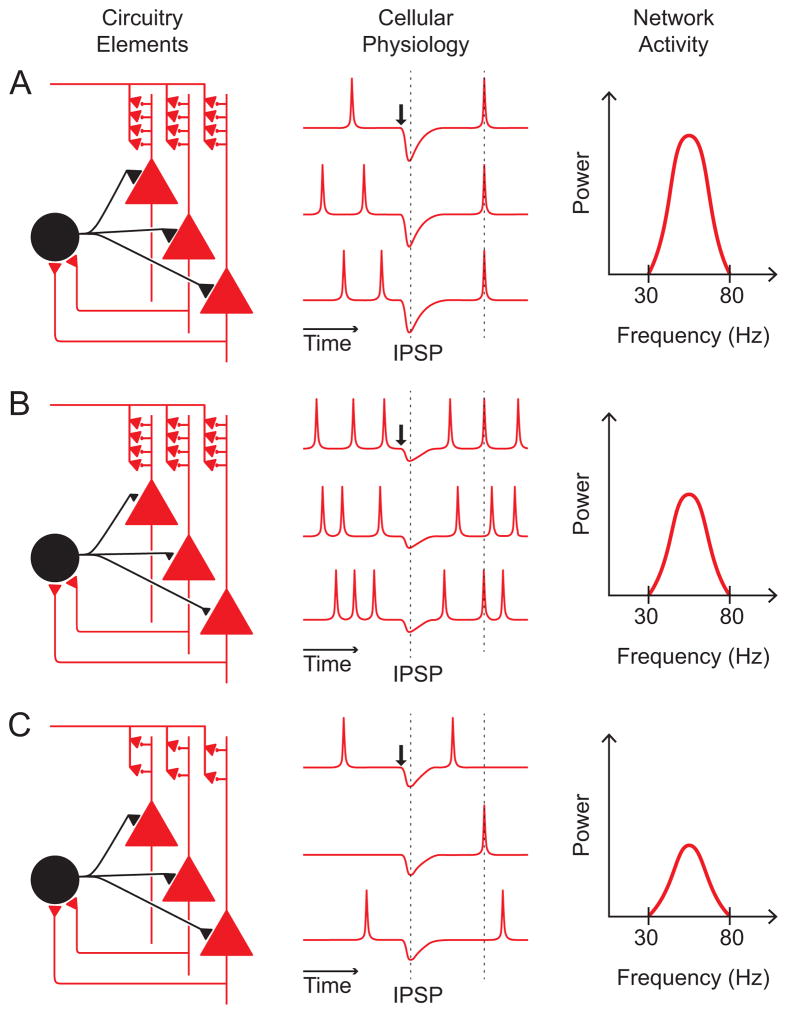Figure 1. Hypothesized role of cortical layer 3 circuitry elements in the cellular physiology that generates gamma oscillations.
A. Healthy state. Left) Excitatory inputs (small red triangles) to layer 3 pyramidal cells (red neurons), their excitatory inputs to PV basket cells (black neurons) and their distributed feedback inhibition (small black triangles) to pyramidal cells are all normal. Middle) Traces illustrate the changes in membrane potential, including spikes and inhibitory postsynaptic potentials (IPSPs), as a function of time, for the three pyramidal cells in the left panel. Under conditions (e.g., demands of a working memory task) that trigger pyramidal-interneuron gamma (PING) oscillations (black arrow), the firing of the PV basket cell produces simultaneous IPSPs in all innervated pyramidal cells. When this inhibition decays, the pyramidal cells fire in synchrony and depolarize the PV basket cell, causing the process to repeat, producing an oscillatory pattern of synchronized pyramidal cell firing. The decay period of PV basket cell inhibition causes the oscillation to occur at 30–80 Hz or gamma frequency. The vertical dotted lines indicate the timing of the IPSP (left line) and of synchronous pyramidal cell activity (right line). Right) Due to the strength of both excitation and inhibition in the circuit, the power of the gamma oscillation is high. B. Schizophrenia as a state of weaker inhibition because of an alteration intrinsic to PV neurons. Left) Excitatory inputs to pyramidal cells are normal but feedback inhibition from PV cells is very weak (black triangles smaller than in A). Middle) At baseline (e.g., before the PING trigger), excitatory drive to pyramidal cells is normal but inhibition is very weak (IPSP size markedly reduced compared to A); as a result, pyramidal cells are “disinhibited” and overall fire more asynchronous spikes than in the healthy state. Under conditions (e.g., demands of a working memory task) that trigger PING, the small IPSPs evoked by PV basket cells are insufficient to synchronize the firing cycle of all pyramidal cells. Right) Fewer pyramidal cells firing in synchrony results in lower gamma band power. C. Schizophrenia as a state of weaker excitation because of an alteration intrinsic to pyramidal neurons. Right) Due to a reduced number of dendritic spines, excitatory drive to pyramidal cells is low, which elicits a compensatory reduction in the strength of feedback inhibition from PV basket cells. Middle) At baseline, pyramidal cells show low activity. Under conditions (e.g., demands of a working memory task) that trigger PING, the compensatory reduction in feedback inhibition provided by PV basket cells reduces the capacity of PV basket cell-mediated inhibition to synchronize pyramidal cell activity. Right) The combination of weak excitation, that reduces pyramidal cell activity, and reduced feedback inhibition in the circuit leads to very low gamma band power. Although not shown for the sake of clarity, it is important to note that the changes strength of inhibition and excitation shown in panels B and C could also have an impact on the peak frequency and bandwidth of gamma oscillations

